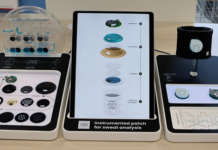
Technology is evolving faster than ever, and we are now witnessing the dawn of truly independent intelligent systems. What once existed only in science fiction—machines that can sense, decide, and act without constant human oversight—is quickly becoming a practical reality. The autonomous AI and autonomous agents market is forecast to exceed USD 93.7 billion by 2034, signaling a major transformation in how industries operate, optimize, and make decisions.
Understanding Autonomous AI and Autonomous Agents
Autonomous AI and autonomous agents represent a new generation of intelligent systems designed to operate with minimal human involvement. Unlike traditional automation, which follows pre-programmed instructions, these systems can perceive their environment, learn from experience, and act independently to achieve specific goals.
Examples include:
- Virtual assistants that handle complex customer service interactions
- AI-driven bots managing logistics and inventory
- Intelligent robotics systems that perform manufacturing or warehouse operations
- Smart financial agents that detect fraud and optimize transactions
In essence, they are digital co-workers capable of continuous learning and adaptation.
What’s Fueling the USD 93.7 Billion Growth by 2034
The rapid expansion of this market is driven by a mix of technological advancements and economic necessity. Here are the main growth factors expected to propel this market toward nearly USD 94 billion within a decade:
- Demand for Efficiency and Automation
Organizations across industries are racing to reduce operational costs while improving productivity. Autonomous agents bring an ability to streamline processes, minimize human error, and operate around the clock—key advantages in competitive sectors like manufacturing, logistics, and retail.
- Breakthroughs in Artificial Intelligence
Progress in machine learning, natural language processing, reinforcement learning, and large language models has made AI systems far more capable than before. Modern algorithms allow autonomous agents to make context-aware decisions and learn continuously, enabling them to perform complex roles once thought impossible for machines.
- Cloud-based Deployment and Scalability
The adoption of cloud computing and edge infrastructure has made it easier for companies to integrate AI-based systems without heavy upfront costs. Cloud deployment also enables seamless scaling, data sharing, and real-time updates across distributed environments.
- Expanding Applications Across Industries
The use of autonomous agents is spreading beyond the tech sector into industries like automotive, finance, healthcare, and agriculture. In automotive, for example, they power self-driving systems and traffic optimization. In healthcare, they support diagnostics and treatment planning.
- Rising Investment and R&D Activity
Both established corporations and startups are investing heavily in autonomous AI research. Governments are also supporting these efforts with funding for AI-driven innovation, smart cities, and industrial automation projects.
Key Challenges on the Path Forward
While the market potential is immense, several barriers could shape its trajectory over the next decade:
- Trust and Reliability Issues
The biggest challenge is ensuring that autonomous systems act safely and predictably. Errors in decision-making—especially in critical areas like finance or healthcare—can have serious consequences. Building explainable and transparent AI models will be essential.
- Ethical and Regulatory Concerns
As autonomy grows, so do questions around accountability. Who is responsible when an autonomous system makes a wrong decision? Governments worldwide are still developing policies to regulate these technologies.
- Data Readiness and Infrastructure Gaps
Many organizations lack the data quality, IT infrastructure, and AI-skilled workforce needed to deploy and manage autonomous systems effectively. Without proper preparation, businesses risk falling behind competitors that have invested early.
- Overhyped Expectations
While the projected USD 93.7 billion figure is promising, businesses should remain cautious of inflated expectations. Some forecasts predict even higher values, but adoption success will depend on real-world results and measurable ROI.
Strategies for Businesses to Stay Ahead
To thrive in this fast-evolving market, companies need more than enthusiasm—they need a clear strategy. Here are practical steps that can help:
- Start with a Focused Use Case
Identify one area where autonomy can deliver quick, measurable results—such as customer service automation, workflow optimization, or logistics management. Successful small-scale pilots build internal confidence and pave the way for broader adoption.
- Build Strong Data Foundations
Reliable autonomous systems depend on clean, well-structured, and accessible data. Businesses should invest in robust data governance, integration, and security frameworks to ensure accuracy and compliance.
- Adopt a Human-in-the-Loop Approach
Even as systems gain independence, maintaining a layer of human oversight enhances trust and safety. A hybrid approach—where humans supervise and guide autonomous agents—ensures balanced and ethical decision-making.
- Prioritize Transparency and Accountability
Organizations deploying AI must ensure that users and regulators understand how decisions are made. Transparent systems reduce legal risk and foster customer trust.
- Collaborate and Partner
Working with AI vendors, research institutions, and technology providers can accelerate learning and reduce costs. Strategic partnerships also help in accessing the latest tools and innovation pipelines.
- Stay Aligned with Regulations and Ethics
As global AI regulations evolve, compliance will become a differentiator. Ethical deployment—focused on fairness, safety, and privacy—will separate leaders from laggards.
Regional Trends and Opportunities
While North America currently dominates the autonomous AI and agents market, accounting for a large portion of global revenue, Asia-Pacific is emerging as a high-growth region. Countries such as China, Japan, South Korea, and India are heavily investing in AI research, robotics, and smart infrastructure.
In Europe, strong regulatory frameworks and ethical AI initiatives are shaping responsible innovation, while the Middle East and Latin America are seeing new opportunities in industrial automation, energy, and logistics.
The global spread of these technologies ensures that no region will remain untouched by the influence of autonomy in the coming decade.
Why the USD 93.7 Billion Milestone Matters
Reaching USD 93.7 billion by 2034 represents more than just economic growth—it marks a technological evolution. It reflects a shift from routine automation toward intelligent systems capable of decision-making, adaptation, and learning.
This growth will redefine industries:
- Manufacturing will see self-optimizing production lines.
- Finance will rely on autonomous agents for predictive analytics and fraud control.
- Healthcare will benefit from virtual agents that assist in diagnosis and patient care.
- Transportation will evolve through autonomous logistics and connected vehicles.
Companies that prepare early will not only improve efficiency but also secure a strong competitive edge in the next industrial revolution.
Conclusion
The rise of autonomous AI and autonomous agents is one of the defining transformations of our era. As these technologies advance toward a projected USD 93.7 billion global market by 2034, they promise to reshape business models, workforce dynamics, and even societal structures.
For enterprises, the imperative is clear: embrace autonomy responsibly, strategically, and early. Those who do will find themselves at the forefront of a revolution that’s changing not just how we work—but how the world itself operates.
Source: https://www.gminsights.com/industry-analysis/autonomous-ai-and-autonomous-agents-market















